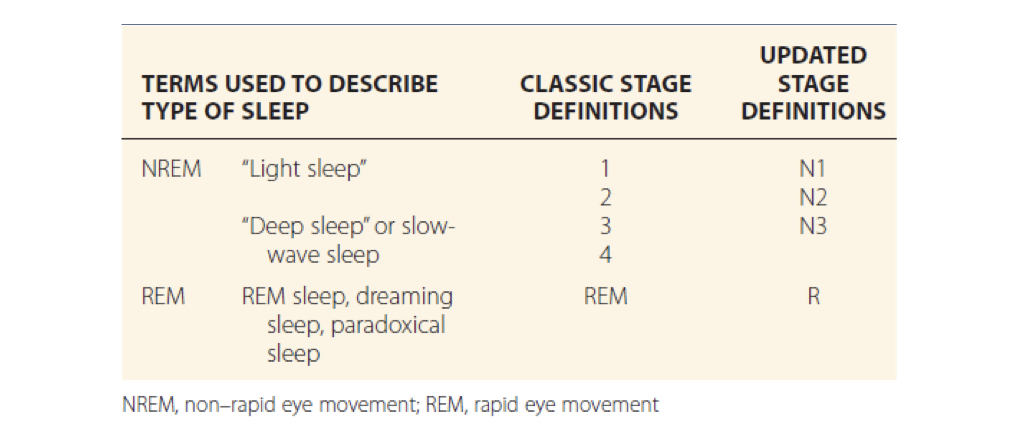Figure 1

Sleep staging uses the frequency, amplitude, and pattern of data obtained by EEG (brain wave activity), electrooculography (EOG, eye movements). Electromyography (EMG, muscle tone), which together score the record as stage Awake, N1, N2, N3, or REM. Figure 1 summarizes sleep-stage scoring rules according to the traditional Rechtschaffen and Kales system (R&K) and the current system developed by the AASM.
Figure 2
.jpeg)
Sleep histograms summarize sleep laboratory recordings and demonstrate the progression of stages during the night. The typical histogram shows how a night of sleep for a patient is organized (Figure 2). The Y-axis corresponds to the various stages of NREM sleep, alternating with REM sleep. Most SWS occurs in the first part of the night, and most REM sleep appears in the last part. In normal individuals, sleep is entered by way of NREM sleep, with the first NREM episode occurring at about 90 minutes. Thereafter, NREM and REM alternate about every 90 minutes.

